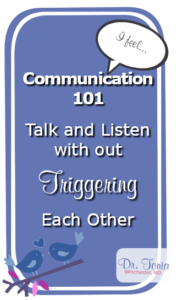 Chapter One – The Back Story
Chapter One – The Back Story
A year ago I joined a women’s dream circle. There are 6 of us, all healers. We meet once a month to witness and process each others’ dreams. We call it “process” and not “analyze” because our approach allows us as the collective dreamer to integrate the experience of the dream, and not just attach a contrived meaning to it.
The process involves a specific technique that we’ve refined over several months. First, if necessary, the dreamer reads their dream in their head so that it can be top of mind. The dreamer then shares the dream from memory in the first person and in the present tense. For example, “I sit alone at a bar. The bar tender wears a hat shaped like an alligator. The saloon style doors open and a giant walks in.”
The next part is crucial. When we ask clarifying questions or share insights we never talk in the second person. We only ever talk in the first person. As soon as the dream is shared it belongs to each member in the circle, as individuals and as a group.
Essentially the dream becomes mine. However, it is now being filtered through my beliefs, experiences, interpretations, traumas, and dramas. The dream exists now in an imagined form; it is a projection of my current and past reality.
I might say, “In my imagined version of the dream I am really struck by the moment when the giant walks in. As a short person I’m wondering if the giant is really a giant or just a tall man?” (I call my 6’4″ husband Giant with affection).
At which point the original dreamer might clarify, “It is a giant. I know because his head is taller than the building.”
Or I might say, “In my imagined version of the dream, I’m really entertained by the alligator shaped hat. It feels silly to me, and I’m curious about it. Do I understand why the bar tender is dressed in that way?” And the dreamer might respond, “I feel the same way. I’m not sure why, and it feels really distracting like this thing in my waking life that is pulling my attention away from what’s important.” Hhhmmmm… Or perhaps, “It feels different to me, pretty normal actually. It’s sorta like this obnoxious thing in my real life that I shouldn’t be tolerating but I am.” Hhhmmmm…
This technique comes from a man named Jeremy Taylor who has been working dreams for 5 decades.
The conversation continues until eventually someone in the group asks, “What’s the secret longing of the dream?” And likely at this point we have processed the dream enough that the dreamer can express a succinct message about the dream is trying to bring forward in the service of health and wholeness (and not comfort or convenience as Jeremy teaches).
That “longing” question comes from another dream worker called To-ko Pa.
Anyhoo, back to Jeremy Taylor’s technique. This first person approach is a vital part of normal communication. Not just in dream work, but in real life, which is why I’m writing this article. The dream work is just the back story.
Chapter Two – The Middle Story
I recently watched a powerful performance art piece by a friend about violence against women. After the show the audience gave her feedback about their impressions. Every time someone spoke to her in the second person I felt my gut tighten like I was being attacked. “When you rolled on your back… when you picked up the plates… when you stood on the one high-healed shoe, when you…”
You, stab, ouch. You, stab, twist, OW! You, stab, vinegar, AAAAAHHHHHH. It triggered me in a visceral way, and I wasn’t even performing.
On my drive home something clicked. Unfortunately it was too late to share my insights, with the group. I did see my friend the next day and after explaining dream work back story, I said, “In my imagined version of your performance I feel raw, nauseous, hollow and haunted. I feel the resilience to struggle in my body, and I also know that this struggle is not over. I’m aware there is a long way to go, that we as women have a long road ahead.”
Admittedly it was emotional to share this personal projection, which was healing for both of us.
Chapter Three – The Story Becomes A Lesson
So how does all this relate to you, my reader? Well, if you’re a human being reading this and not an alligator (or an alligator hat) then you most likely have to converse with other human beings in your every day life. Sometimes these conversations are challenging. I think the principle works really well in these circumstances.
I have a lot of patients book appointments with me specifically to counsel them on how to handle certain situations, and what they should say.
I learned about, “I feel” statements in high school. “When You do this, I feel this.” I used to teach people this same method. Jeremy’s idea uplevels that strategy. Read on dear one.
Chapter Four – How to Talk and Listen with out Triggering Each Other.
Talking:
I don’t suggest using the second person anymore at all if avoidable. Using the YOU language forces separation and creates a need for the person to mount a defense. I am not! I do not! How dare you!
Instead I suggest just sharing what the body is experiencing.
“I’m noticing my brows are really furrowed.”
“My chest feels tight.”
“My palms are sweaty.”
“I’m having a hard time catching my breath.”
“I feel like collapsing.”
“My skin feels hot and prickly.”
I’ve heard this called micro-communication in some circles, and I’ve been teaching it for a while. And now, since my experience at my friend’s show, I understand why it works. There is nothing to get defensive about. It’s just what we’re noticing. It also lets the other person know that the conversation is having a physiological effect. It’s important to know the impact of our words. They have the power to hurt or heal.
You can also label the feelings if you can. “I feel nervous about what I’m going to say.” Every feeling just wants to be felt and acknowledged.
Listening:
The full version can also work in active listening. “In my imagined version of your story, I’m really aware of my stomach muscles clenching and how tense I feel.” It’s okay to acknowledge our uncomfortable experiences. And if you feel silly saying, “In my imagined version…” out loud, say it in your head before you speak. The intention will come across and your conversation buddy will know you’re speaking from your experience through your filters.
I hope this information helps you talk to your loved ones with peace and grace.
Not being heard is very frustrating, and it is possible to express your needs or concerns with out creating an argument or triggering each other.
I also hope this information helps deep, kind listening. Remember any reaction to how people behave or what they say is just an imagined projection based on everything you believe to be true in this moment.
Try this technique on. Let me know how it goes for you in the comments below! (You can also share any other feedback you might have.) I’m open to your imagined version of this article 😉
To your healthy, thriving, delightful life,









